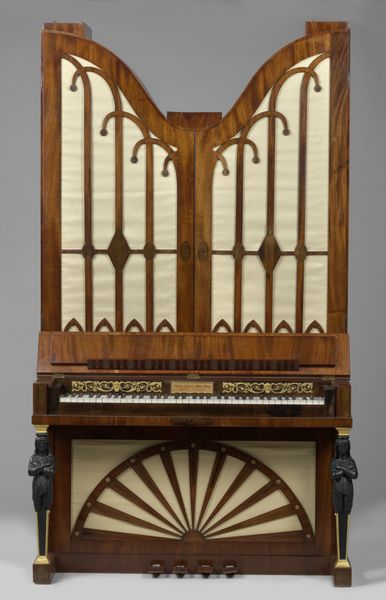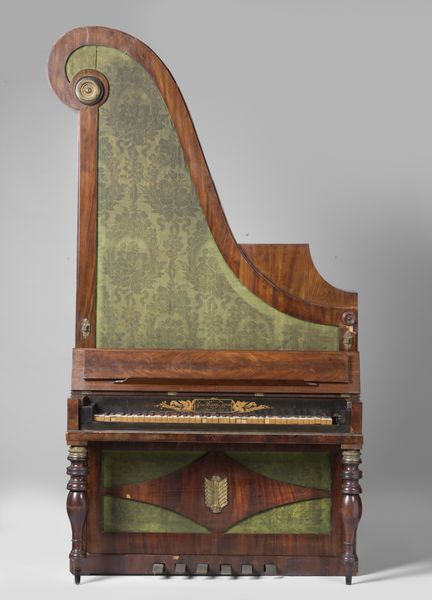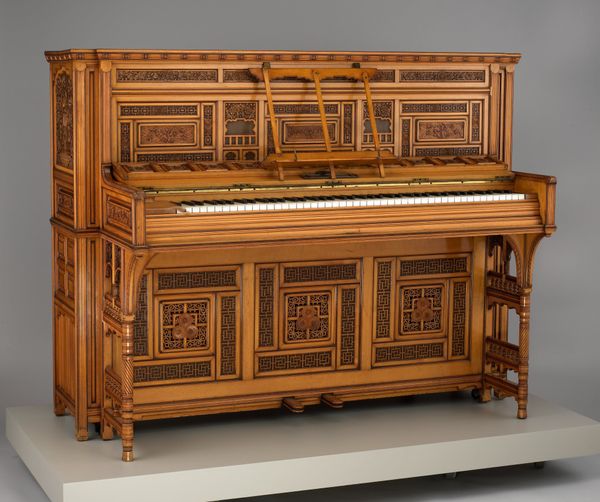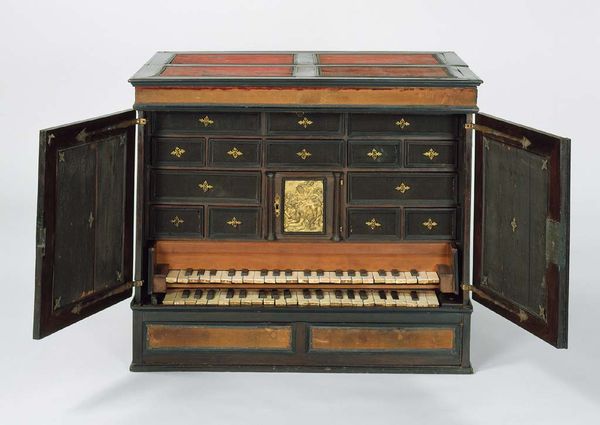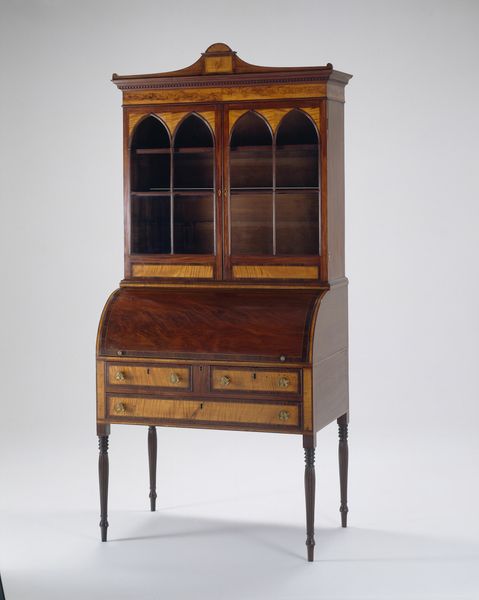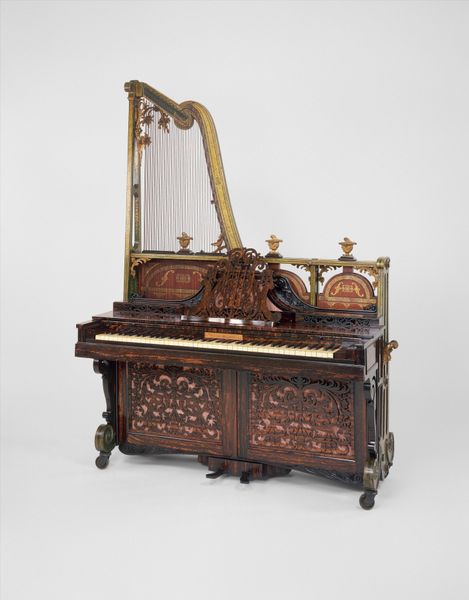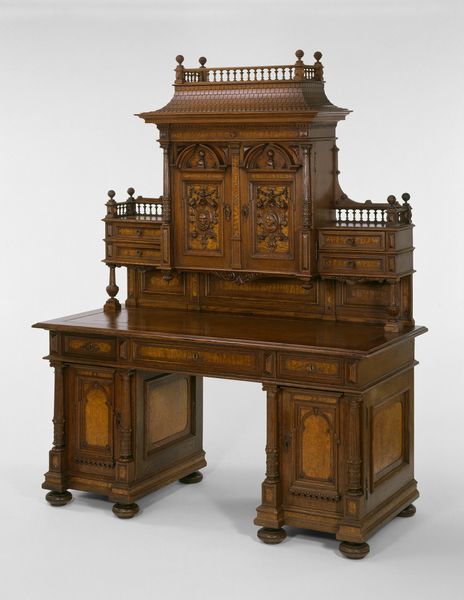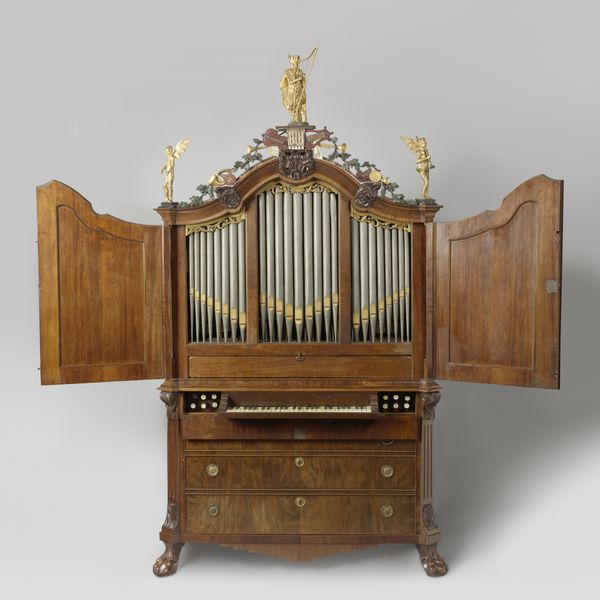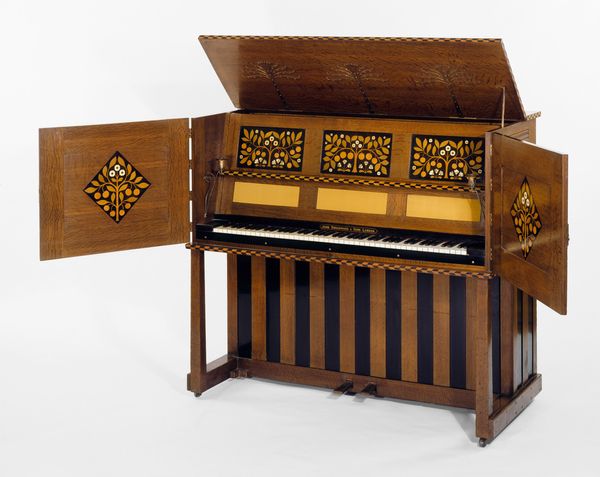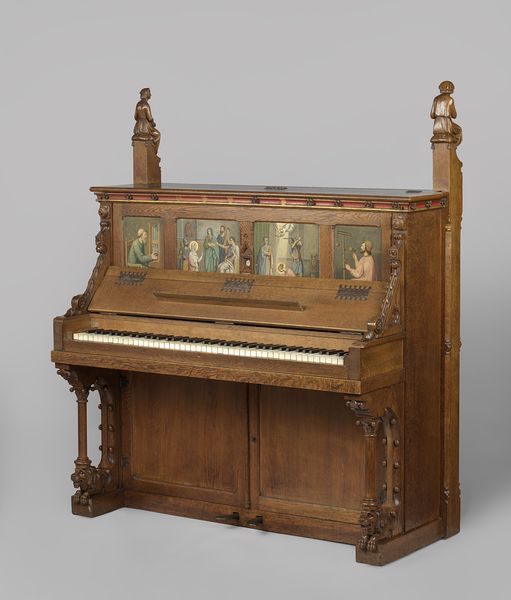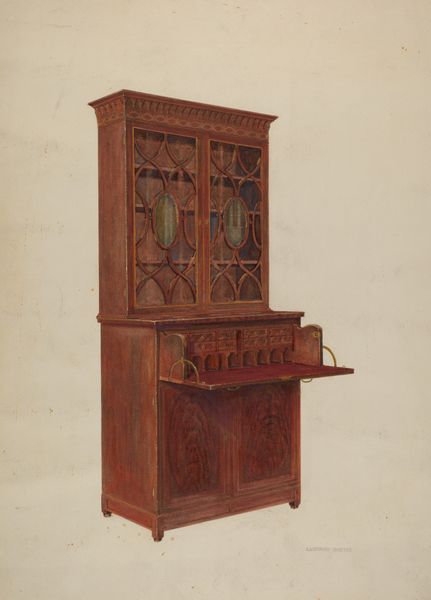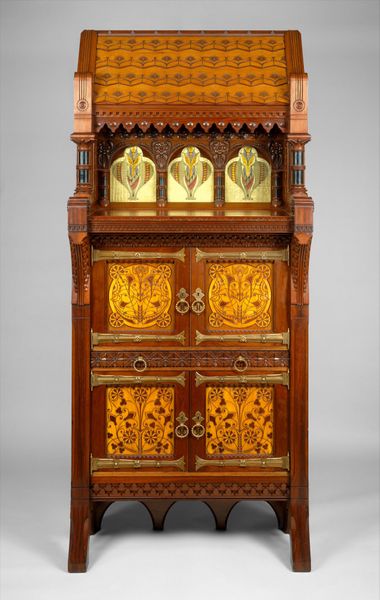
carving, wood
#
wood texture
#
medieval
#
carving
#
figuration
#
geometric
#
wooden texture
#
united-states
#
wood
#
musical-instrument
#
decorative-art
Dimensions: H.: 207 cm (81-1/2 in.); D.: 71.5 cm (28-5/8 in.); W.: 136.5 cm (53-3/4 in.)
Copyright: Public Domain
Curator: What strikes me first is its architectural quality—almost like a miniature cathedral, wouldn’t you agree? Editor: Well, if cathedrals were made of highly polished wood. I am curious about how it was used, whether it served as decoration in a middle-class home, an indicator of their cultural status or if it actually used for chamber recitals, the type that women did after dinner? Curator: I can understand why you are thinking about class, though, it reminds of an aesthetic movement attempt to include sacred objects. This “Chamber Organ”, crafted around 1852 by William Crowell, is such an example of decorative arts, referencing medieval figuration. Editor: Made with United-States materials, most likely sourced regionally. Look at the texture—a skilled artisan must have spent hundreds of hours on all that hand-carving. Curator: Notice that carved filigree, and the red fabric behind the tracery? It does add warmth. Perhaps Crowell aimed to create not just a musical instrument but also a vessel of domestic spiritual elevation, aligning sound with devotional experience? Editor: Interesting how an organ typically associated with public spaces like churches and concert halls is reimagined for intimate domestic settings. Curator: Yes, consider the symbols: geometric shapes are not a mere decorations, each a component that evokes specific associations – sacred geometry—aimed at connecting one’s inner state to that of the divine. Editor: It really brings up questions about what was being created on this scale, with what skills, and consumed. One cannot escape to acknowledge the contrast to mass production, as that shift took hold. Did people still purchase things like that after a while, or do them yourself. Curator: Crowell's chamber organ invites us to ponder how design objects have the power to transform everyday rituals. Editor: Indeed. This object seems like the transition point between sacred instrument and a commercial thing. What was gained or lost is a relevant debate now as it was in the Victorian era.
Comments
No comments
Be the first to comment and join the conversation on the ultimate creative platform.
